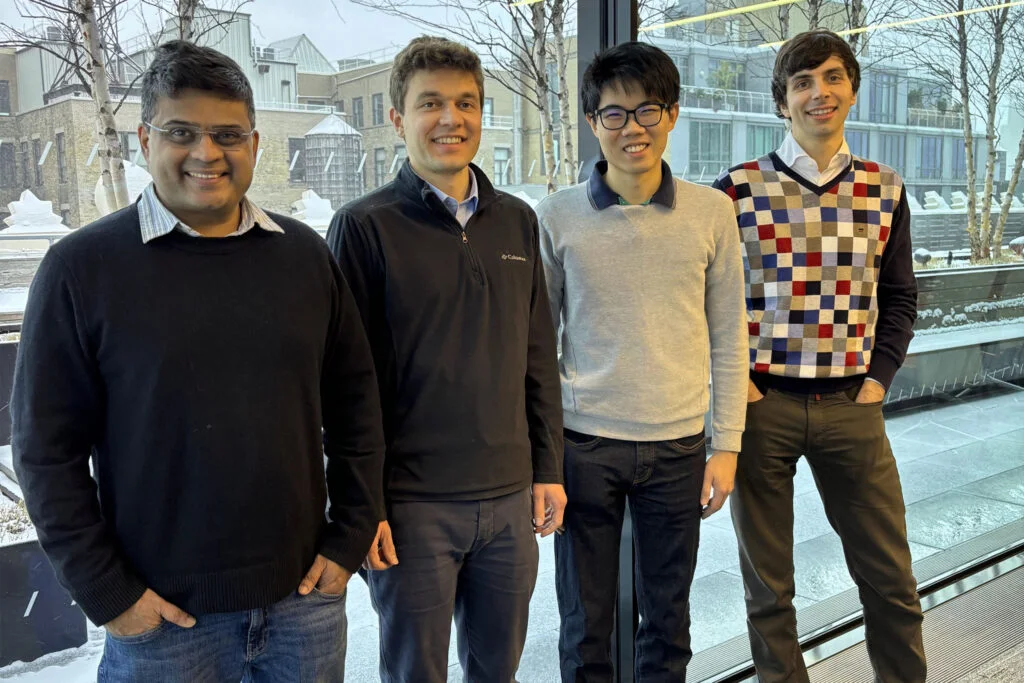Harvard physicist Ashvin Vishwanath and his team, in collaboration with quantum computing company Quantinuum, have created a new phase of matter called non-Abelian topological order using a quantum processor. This phase of matter includes exotic particles known as non-Abelian anyons, which are neither bosons nor fermions. These anyons, only possible in a 2D plane, have memory-carrying capabilities and are inherently stable, making them potential platforms for quantum computing. The team’s findings are published in Nature, which also involved former Harvard student Nat Tantivasadakarn and postdoctoral fellow Ruben Verresen.
Discovery of a New Phase of Matter: Non-Abelian Topological Order
In a groundbreaking experiment, a team of physicists at Harvard University, led by Ashvin Vishwanath, the George Vasmer Leverett Professor of Physics, has successfully created a new phase of matter known as non-Abelian topological order. This achievement, which was previously only theoretically possible, was accomplished using a quantum processor. The team’s findings, which were published in the scientific journal Nature, have significant implications for the field of quantum computing.
The team’s research focused on the creation and control of exotic particles known as non-Abelian anyons. These particles, which are neither bosons nor fermions, exist in a state that is somewhere in between. Non-Abelian anyons are only mathematically possible in a two-dimensional plane and are known to physicists as quasi-particles. These quasi-particles are not exactly particles, but rather long-lived excitations through a specific phase of matter, similar to ocean waves, and have special memory-carrying capabilities.
Non-Abelian Anyons: A Potential Platform for Quantum Computing
The creation of non-Abelian anyons is not just a significant achievement in fundamental physics, but it also has potential applications in the field of quantum computing. Non-Abelian anyons are inherently stable, unlike the flimsy and error-prone quantum bits, or qubits, used in other quantum computing platforms. They have the ability to “remember” their pasts as they move around each other, a property that makes them topological, or able to be bent and twisted without losing their core identity.
This inherent stability and memory-carrying capability of non-Abelian anyons make them potentially ideal qubits for quantum computing. If these particles can be created and controlled at larger scales, they could significantly extend the computational power of quantum computers beyond that of classical computers.
The Role of Quantum Processor in Creating Non-Abelian Anyons
The team of researchers used Quantinuum’s newest H2 processor to create the non-Abelian anyons. They started with a lattice of 27 trapped ions and used partial, targeted measurements to sequentially increase the complexity of their quantum system. This process resulted in an engineered quantum wave function with the exact properties and characteristics of the particles they were after.
The use of measurements in this experiment is noteworthy. As Vishwanath points out, “Measurement is the most mysterious aspect of quantum mechanics, leading to famous paradoxes like Schrödinger’s cat and numerous philosophical debates. Here we used measurements as a tool to sculpt the quantum state of interest.”
The Significance of the Discovery
The successful creation of non-Abelian anyons and the new phase of matter is a significant milestone in the field of quantum mechanics, particularly as it enters its 100th year. The ability to not just explore a theory, but actually demonstrate it, is a testament to the progress made in this field.
Vishwanath expressed his amazement at the experiment’s success, stating, “It really connects many different aspects of physics over the years, from foundational quantum mechanics to more recent ideas of these new kinds of particles.” This discovery not only advances our understanding of quantum mechanics but also opens up new possibilities for the development of quantum computing.

